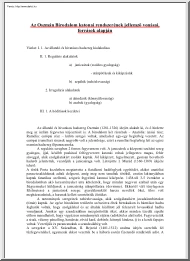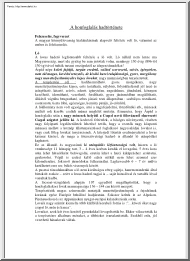Datasheet
Year, pagecount:2021, 2 page(s)
Language:English
Downloads:2
Uploaded:May 06, 2021
Size:704 KB
Institution:
-
Comments:
Attachment:-
Download in PDF:Please log in!
Comments
No comments yet. You can be the first!Most popular documents in this category
Content extract
February 6, 2018 Defense Agencies Focus on Electronic System Compatibility By: TERRY COSTLOW Technologists from U.S Army’s Communications-Electronics Research, Development and Engineering Center (CERDEC), the Air Force Life Cycle Management Center (AFLCMC) and NAVAIR are creating standards for various applications. Two of the primary specifications are the Air Force Sensor Open Systems Architecture (SOSA) and Navy’s Hardware Open Systems Technology (HOST). The programs are part of projects that also include the Vehicular Integration for C4ISR/EW Interoperability (VICTORY) ground vehicle initiative. Military planners have two goals in mind. One is to simplify their procurement and spare parts stocking by using more COTS products. Another is to ensure that board and system manufacturers create new systems and maintain products with long life cycles. “SOSA is procurement based, everything I do I have to think about doing it for 30-40 years,” said AFLCMC’s Ilya Lipkin. “We
want an open business model to ensure a strong industrial base.” That base is small compared to many segments of the military market. IHS Markit analyst Brian Arbuckle pegged the 2016 VME-VPX market at $491 million. Many military board and system suppliers are involved in VITA, a standards organization that manages Open VPX, VME and works with other standards bodies like PICMG to ensure that equipment is based on some similar technologies. Military planners work closely with VITA “The slot and backplane profiles, the module profiles and the protocols developed by SOSA and HOST have a close relationship with the VITA specifications,” said Greg Rocco, an MIT Lincoln Laboratory staffer deeply involved in standards development. “VITA is an international standards body so there are things military people can’t talk about in VITA meetings.” VITA is also making moves to improve compatibility. When VPX was created, developers set profiles for different tasks, but unspecified
connector pins were handled in different ways, so a video board from one company often couldn’t be used in a system designed for another company’s hardware. That’s been changed “We’ve got slot profiles that are more fully defined; they set pins for video, USB and many other things,” said Michael Munroe, Technical Product Specialist at Elma Electronic Inc. “This solution will bring down the cost of boards used in multiple programs. Orders from different military groups will create markets large enough to justify development from a number of companies.” Improving VPX compatibility is an important focus for the industry, since this architecture is seen as the pathway for designs that can be upgraded over the next several years. VME sales still outpace VPX business, but that’s largely because many acquisition programs in military and aerospace remain active for decades. “Our business is about 20% VME, but we haven’t seen any new VME designs in the last four or
five years. The rest of our business is about 30% PCI Express and 40% VPX,” said Rodger Hosking, Vice President of Pentek. “VPX provides a tremendous performance improvement, and the new profiles will tend to eliminate differences between vendors.” While military users are anxiously planning for some long-term technology upgrades, they are skeptical about some others. The microcontroller world has shifted to multicore devices, but many military system requirements still call for conventional processors that have only one core. In demanding real-time systems, those who set requirements want assurance that things will happen on time without interference. “Nobody wants to be the first to certify a processor; that’s one reason why multicores are not used extensively,” said Scott Engle, Director of Business Development at Mercury Systems. “Another is that multicores share cache memory, and shared resources are a problem. An application running on core one can impact
performance on core two. The amount of interference rises as the number of cores rises. When you get to 16 or more cores, it’s difficult to understand how performance may change.” https://www.saeorg/news/2018/02/defense-agencies-focus-on-electronic-system-compatibility
want an open business model to ensure a strong industrial base.” That base is small compared to many segments of the military market. IHS Markit analyst Brian Arbuckle pegged the 2016 VME-VPX market at $491 million. Many military board and system suppliers are involved in VITA, a standards organization that manages Open VPX, VME and works with other standards bodies like PICMG to ensure that equipment is based on some similar technologies. Military planners work closely with VITA “The slot and backplane profiles, the module profiles and the protocols developed by SOSA and HOST have a close relationship with the VITA specifications,” said Greg Rocco, an MIT Lincoln Laboratory staffer deeply involved in standards development. “VITA is an international standards body so there are things military people can’t talk about in VITA meetings.” VITA is also making moves to improve compatibility. When VPX was created, developers set profiles for different tasks, but unspecified
connector pins were handled in different ways, so a video board from one company often couldn’t be used in a system designed for another company’s hardware. That’s been changed “We’ve got slot profiles that are more fully defined; they set pins for video, USB and many other things,” said Michael Munroe, Technical Product Specialist at Elma Electronic Inc. “This solution will bring down the cost of boards used in multiple programs. Orders from different military groups will create markets large enough to justify development from a number of companies.” Improving VPX compatibility is an important focus for the industry, since this architecture is seen as the pathway for designs that can be upgraded over the next several years. VME sales still outpace VPX business, but that’s largely because many acquisition programs in military and aerospace remain active for decades. “Our business is about 20% VME, but we haven’t seen any new VME designs in the last four or
five years. The rest of our business is about 30% PCI Express and 40% VPX,” said Rodger Hosking, Vice President of Pentek. “VPX provides a tremendous performance improvement, and the new profiles will tend to eliminate differences between vendors.” While military users are anxiously planning for some long-term technology upgrades, they are skeptical about some others. The microcontroller world has shifted to multicore devices, but many military system requirements still call for conventional processors that have only one core. In demanding real-time systems, those who set requirements want assurance that things will happen on time without interference. “Nobody wants to be the first to certify a processor; that’s one reason why multicores are not used extensively,” said Scott Engle, Director of Business Development at Mercury Systems. “Another is that multicores share cache memory, and shared resources are a problem. An application running on core one can impact
performance on core two. The amount of interference rises as the number of cores rises. When you get to 16 or more cores, it’s difficult to understand how performance may change.” https://www.saeorg/news/2018/02/defense-agencies-focus-on-electronic-system-compatibility





